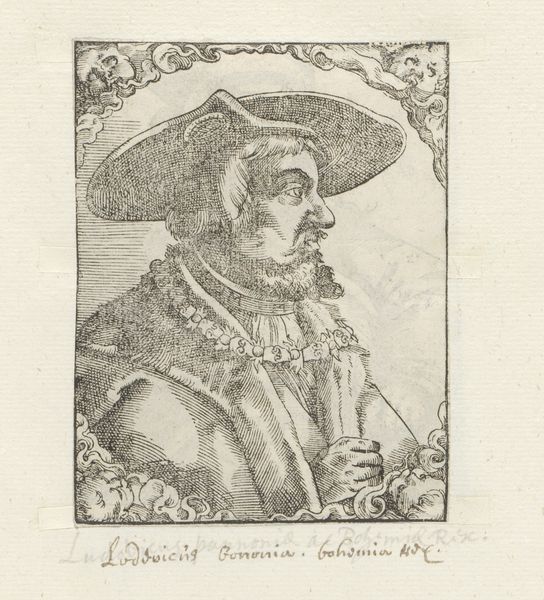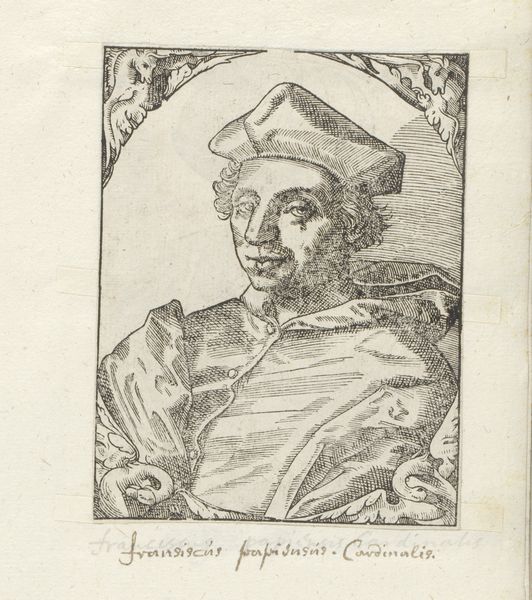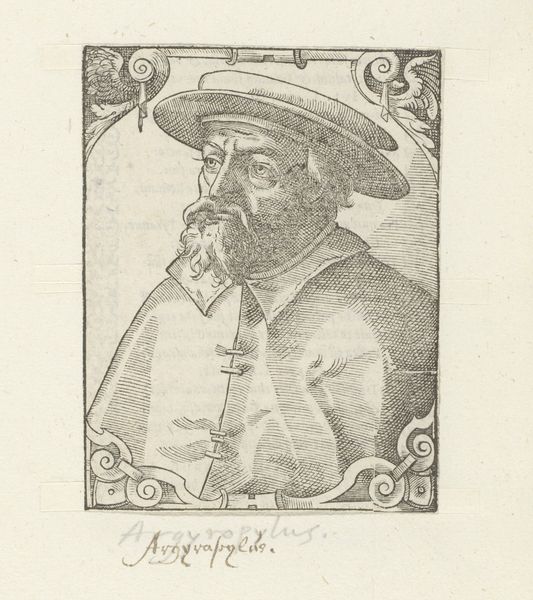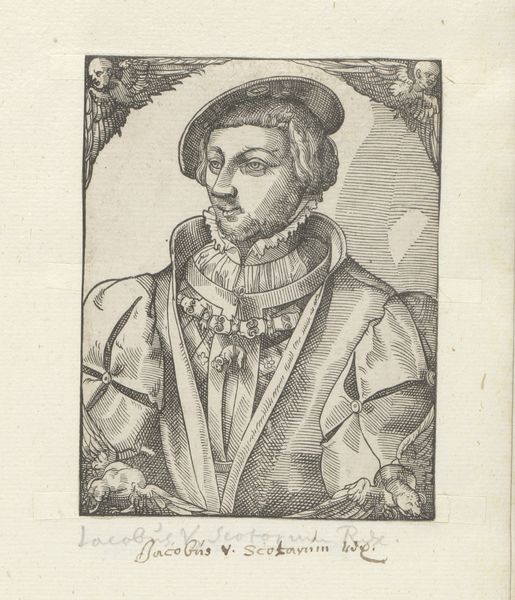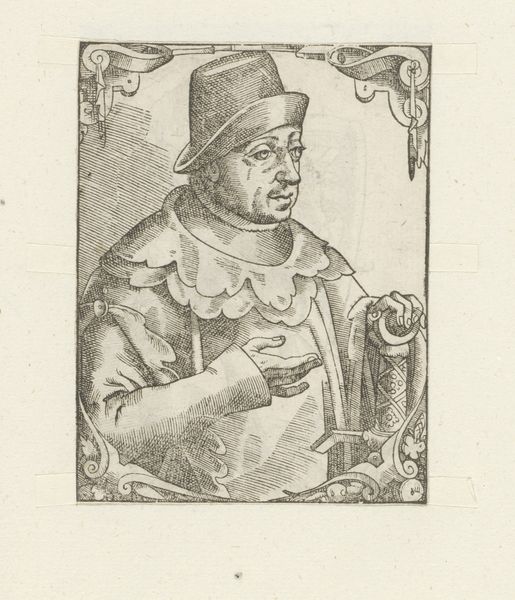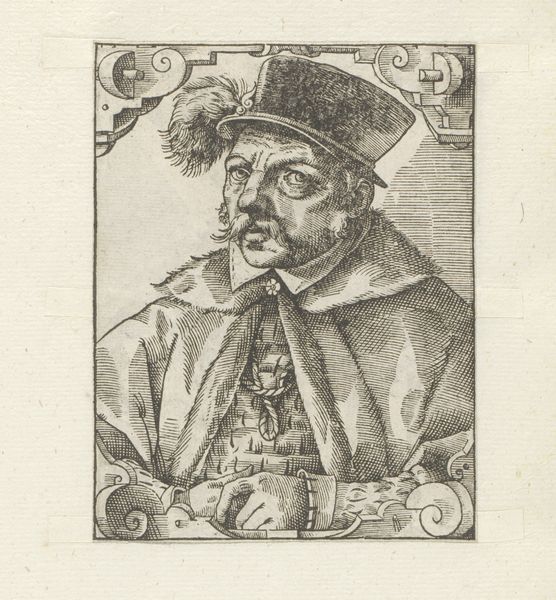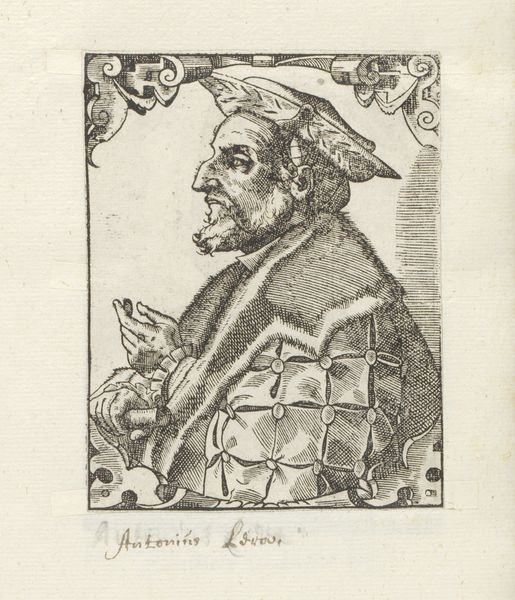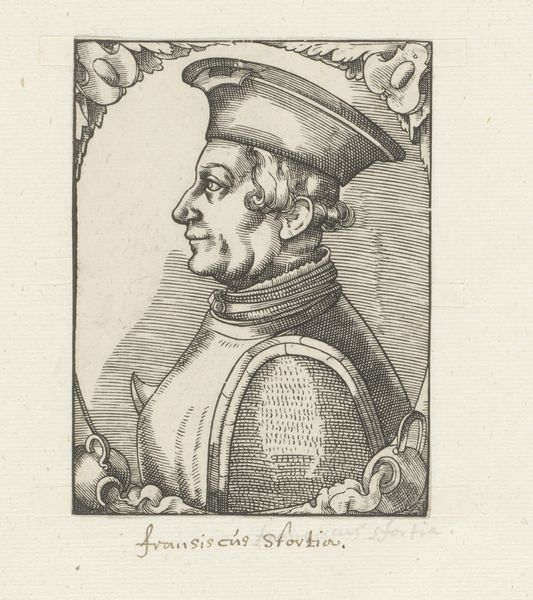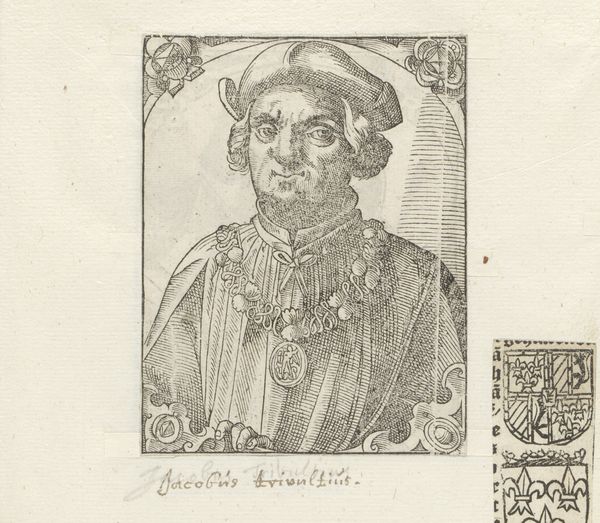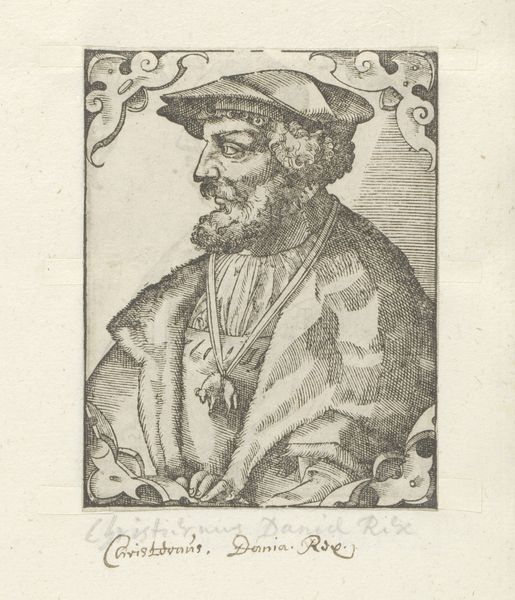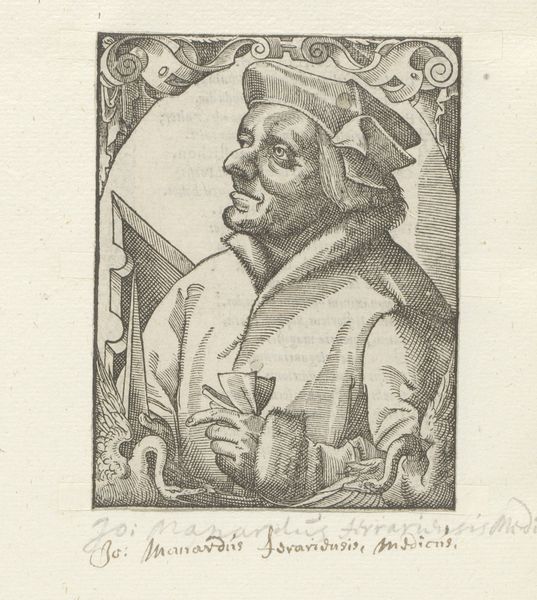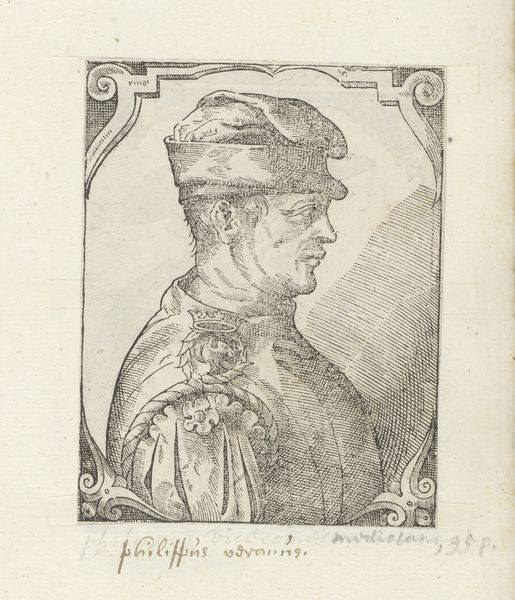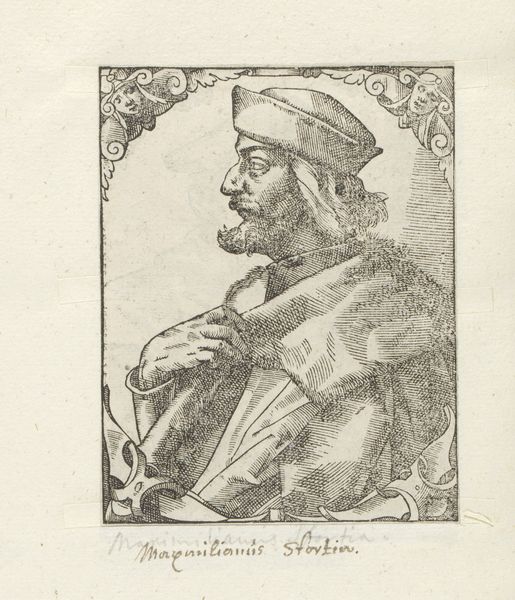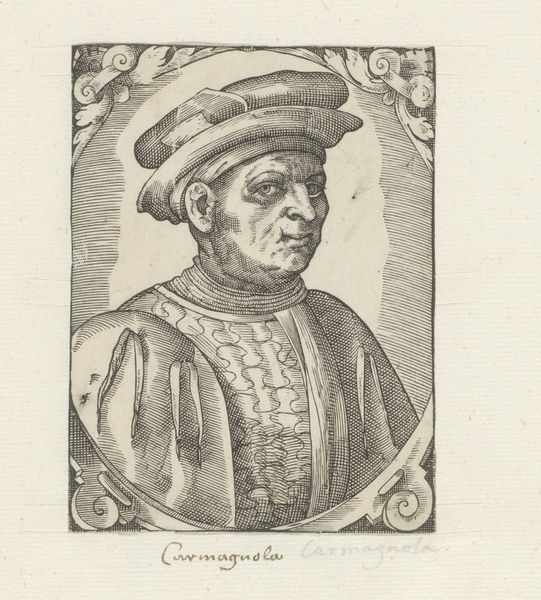
drawing, print, engraving
#
portrait
#
drawing
# print
#
old engraving style
#
mannerism
#
figuration
#
11_renaissance
#
line
#
engraving
Dimensions: height 105 mm, width 84 mm
Copyright: Rijks Museum: Open Domain
Curator: Look at this remarkable engraving, "Portret van Fagiolanus Uguccio," dating roughly from 1549 to 1575. It is fascinating, isn’t it? Editor: Fascinating and rather severe. The cross-hatching gives a stern, almost forbidding quality. Is that intentional? Curator: Undoubtedly. This type of formal portrait served a very specific purpose, reinforcing status and power. Consider how dress and deportment shape the representation. What might a viewer from the period think? Editor: It’s interesting to think about what is concealed, too. His inner life. Does the engraving challenge our expectations of masculinity within that timeframe, and to what extent is he actively complicit within his representation? Curator: Precisely! It invites us to explore societal pressures. There's also the institutional context. Consider, for instance, who commissioned and consumed such images, and how it affected wider perception. Editor: His attire suggests aristocracy. I also notice a kind of tension between the meticulous detailing in his clothing and face versus the rather static composition, almost frozen. Curator: And the formal border too contributes to that impression, don't you think? This format—the engraved portrait—had a significant role in shaping perceptions of individuals and their place within the social hierarchy. It raises questions around identity performance and the ways in which these performative social positions endure, don't you agree? Editor: Absolutely, but how might those standards affect marginalized people in his court, too, and could this engraving somehow perpetuate the silencing of dissident voices? Curator: Good point, his status as "Mincio Fagiolanus Uguccio Fagiolani" almost becomes a caricature—but within this system he also actively reinforces its foundations, through presentation of family ties and class status! This seemingly small print acts as a powerful symbol in the long power game, yes? Editor: Indeed. Seeing it with you reveals layers I initially overlooked, moving beyond an appreciation for craftsmanship to confront its complex societal roots. Curator: Yes, looking at art, not as a solitary, detached creation, but as deeply connected to its political time is fundamental, I think. It can start important conversations.
Comments
No comments
Be the first to comment and join the conversation on the ultimate creative platform.
